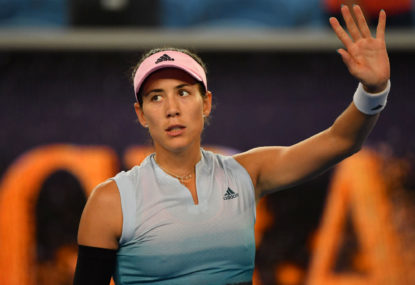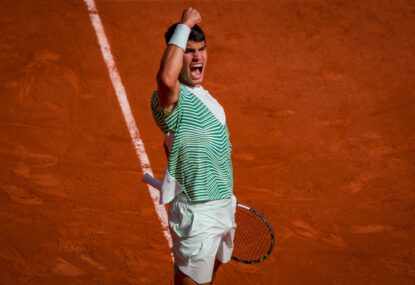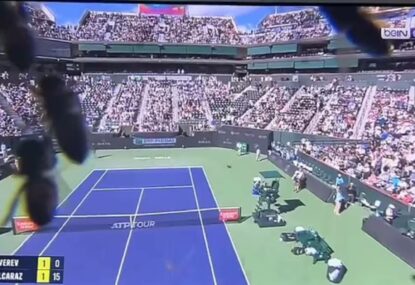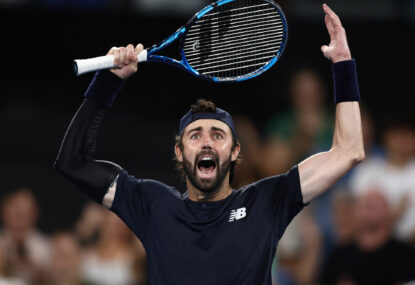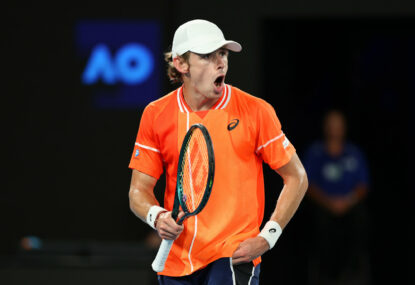Rafael Nadal has not always been at ease on a grass court but managed to win his first grass-court title since 2010 by lifting the Mercedes Cup in Stuttgart.
Bouncing back from his French Open disappointment, the top seed triumphed 7-6 (7-3) 6-3 against Serbia’s Victor Troicki in just under an hour and a half, winning the $118,000 first prize.
It was his 66th ATP Tour title and fourth title on grass, but just his second in a year where the former world No. 1 has dropped to 10th in the rankings.
While most of the top men’s players took a pause after Roland Garros, the 29-year-old went straight back into the fray at the German tournament which he won in 2005 and 2007, however this season it switched from being a clay to a grass surface, and was moved to after the French Grand Slam.
Nadal now heads to Britain for the Queen’s Club Championships in London, the event which he won in 2008 before beating Roger Federer at Wimbledon in perhaps tennis’ greatest battle.
The draw also features home favourite Andy Murray, newly crowned French Open champion Stan Wawrinka, US Open Champion Marin Cilic and reigning champion Grigor Dimitrov.
Nadal’s fall from the pinnacle of the game has been at a ferocious pace. With just two titles (after Sunday’s final) and no Grand Slam finals this season, the Spaniard’s looked more vulnerable and susceptible to embarrassing losses.
Apart from his physical struggles and injury-plagued career, his on-court form in 2015 has been horrifying. He lost half-a-dozen matches on his beloved clay this season and went 21-6 on the red dirt. Compare that with 292-14 record from 2005-2014.
After being stripped of his French Open crown and losing only for the second time in 72 matches in Paris, Nadal’s ranking has plummeted to 10th in the ATP rankings, the first time his rank is a two-digit number since 2005. His performances over the next month on the lawns will decide whether he can come back from such a situation.
Grass has been Rafa’s Achilles heel over his entire career, taking a huge toll on his knees. In 2006, Nadal made it to his first non-clay major final in Wimbledon, losing to Federer in four sets. A year later he lost a five setter to Federer in the Wimbledon final, but did take confidence from the fact that he managed to push the five-time champion to a deciding set.
In 2008, after winning Queens Club, he managed to hold off Federer in the 2008 Wimbledon final in arguably the greatest match of all time.
He had to withdraw from the 2009 Championships because of tendinitis in both of his knees, but came back in 2010 to win his second title at the All England Club, before losing to Novak Djokovic in the 2011 final.
Since his final loss in 2011, he is just 5-5 on the lawns (before last week’s Mercedes Cup), which includes three bamboozling losses at the All England Club.
In 2012, after winning a record seventh Roland Garros title, he lost to German Philipp Kohlschreiber in Halle, which served as a warning for Wimbledon, where he was shocked by unheralded Czech Lukas Rosol, a player then ranked 100th in the world. This was one of the biggest upsets in Grand Slam history and the first time since the Wimbledon 2005 championships that Nadal had failed to progress past the second round of a Grand Slam tournament.
The following year, he skipped the grass court tune-up events and suffered another shocking loss, this time to Belgian Steve Darcis (ranked 135th) in the first round at Wimbledon – his first ever loss in the opening round of a major.
His struggles continued in 2014, as he lost his third consecutive match on the surface to heavy-hitting German Dustin Brown in his opening match at Halle. Although he survived four-set battles in each of the first three rounds, his 2014 Wimbledon run came to an unforeseen end against big-hitting Aussie teenager Nick Kyrgios – at the time Nadal was World No.1 and Kyrgios was ranked 143 places below him.
The most bewildering element of those results was he lost to low-ranked, unheralded players who were supposedly way below his league.
The switch from clay to grass is possibly the most difficult transition in tennis and even more laborious for Nadal. He’s forced to sacrifice his fierce defensive skills to a more subtle approach and better footwork. He loses the punch in his top-spin shots on the low-bouncing turf, and allows big hitters to hit more aggressively.
When the lawns are still lush green at the start of Wimbledon, Nadal’s the most susceptible. The courts operate at a ferocious pace, and the ball skids more because of the slipperiness, making offensive-minded opponents even more dangerous against him.
The only way he can end his recent lull on grass is to make it to the second week at Wimbledon as the baseline grass is chewed off to dust and plays relatively slower, giving Nadal time to pace his game.
With his victory in Stuttgart and a few more good wins at the Queen’s Club, Nadal’s looking to build momentum on the surface. He’ll need to be extremely focussed and sharp once Wimbledon kicks off as due to his tumble in rankings and Wimbledon’s unique seeding system, Nadal will possibly have to go through Wawrinka, Murray, Federer and Djokovic to lift a third Wimbledon title.
Nadal is at a crossroads in his professional career, yet people cannot write him off. The Mallorcan Matador is one of the fiercest competitors sport has ever seen. These recent defeats will only fuel him to practice harder and prove all his detractors wrong.
A strong performance at Wimbledon may just be the perfect medicine to reignite his already historic career.































































































